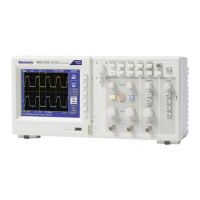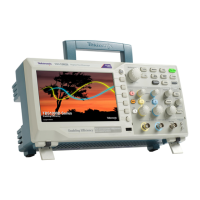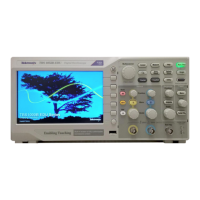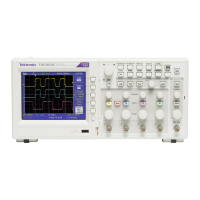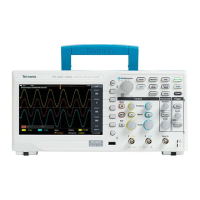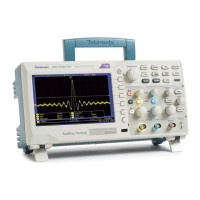Types
The oscilloscope provides three types of triggers: Edge, Video, and Pulse Width.
Modes
You can select the Auto or the Normal trigger mode to define how the
oscilloscope acquires data when it does not detect a trigger condition. See Mode
options.
To perform a single sequence acquisition, push the Single button.
Coupling
You can use the Trigger Coupling option to determine which part of the signal
will pass to the trigger circuit. This can help you attain a stable display of the
waveform.
To use trigger coupling, push the Trigger Menu button, select an Edge or Pulse
trigger, and select a Coupling option.
NOTE. Trigger coupling affects only the signal passed to the trigger system. It
does not affect the bandwidth or coupling of the signal displayed on the screen.
To view the conditioned signal being passed to the trigger circuit, enable trigger
view by pushing and holding down the Trigger Menu button for more than
1.5 seconds.
Position
The horizontal position control establishes the time between the trigger and the
screen center. Refer to Horizontal Scale and Position; Pretrigger Information for
information on how to use this control to position the trigger. Horizontal scale
and position; pretrigger information on page 24
Slope and level
The Slope and Level controls help to define the trigger. The Slope option (Edge
trigger type only) determines whether the oscilloscope finds the trigger point on
the rising or the falling edge of a signal. The Trigger Level knob controls where
on the edge the trigger point occurs.
Rising edge Falling edge
Trigger level can be
adjusted vertically
Trigger can be rising or falling
Understanding oscilloscope functions
22 TBS1000B and TBS1000B-EDU Series Oscilloscopes User Manual

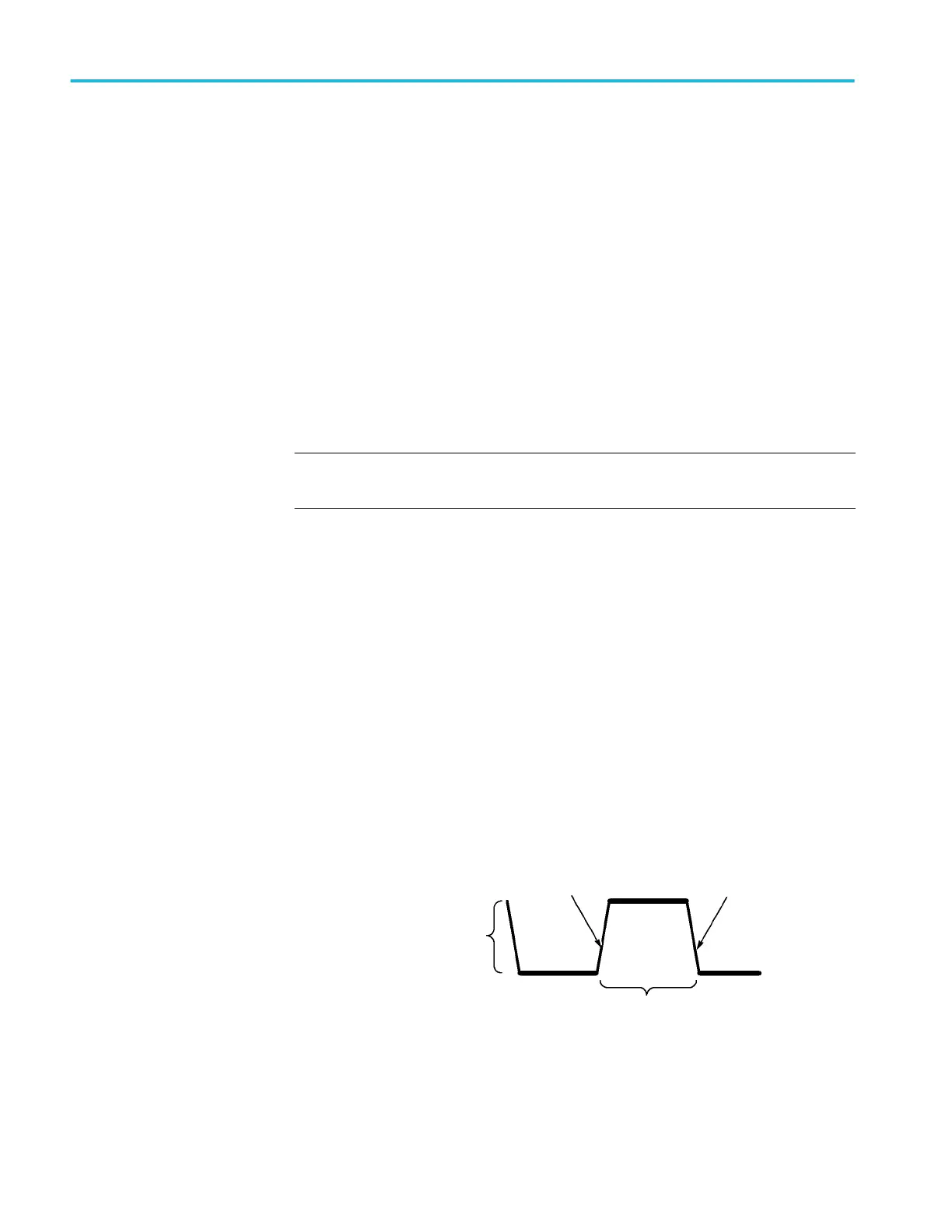